The Unsung Heroes: Unveiling the World of the Crankshaft Manufacturer
Have you ever stopped to think about what truly makes an engine roar to life, translating combustion into rotational motion? It’s a complex symphony of parts, but at its very heart lies the crankshaft. This unassuming yet utterly vital component is responsible for converting the linear motion of the pistons into the rotational motion that ultimately drives your vehicle, powers industrial machinery, or even generates electricity. Frankly speaking, without a perfectly crafted crankshaft, an engine is just an inert collection of metal. And behind every high-performing engine, there’s a dedicated and highly skilled crankshaft manufacturer.
To be honest, the role of a crankshaft manufacturer goes far beyond simply shaping metal. It involves a deep understanding of metallurgy, mechanical engineering, precision machining, and rigorous quality control. These companies are the backbone of countless industries, providing the critical components that keep the world moving. In this comprehensive guide, we'll delve into the intricate world of crankshaft manufacturing, exploring what makes a leading manufacturer stand out, the processes involved, and what to look for when seeking a reliable partner for your engine component needs.
The Heartbeat of Engines: What Exactly Does a Crankshaft Manufacturer Do?
At its core, a crankshaft is a mechanical part that converts reciprocating motion (up and down) into rotational motion (circular), or vice versa. In an internal combustion engine, the explosive force from burning fuel pushes the pistons down. The connecting rods link these pistons to the crankshaft, which then spins, sending power to the transmission and ultimately to the wheels or other driven machinery. It's a component subjected to immense forces – extreme heat, pressure, and rotational stress – making its design and manufacturing absolutely critical.
A top-tier crankshaft manufacturer is not just a parts supplier; they are an engineering partner. They are involved in every stage, from initial design and material selection to forging, machining, heat treatment, and final balancing. They must ensure that each crankshaft meets incredibly tight tolerances, often measured in microns, to guarantee optimal engine performance, efficiency, and longevity. Interestingly enough, the demand for higher performance and fuel efficiency in modern engines means that crankshafts are becoming even more sophisticated, requiring manufacturers to continuously innovate their processes and materials.
Many experts agree that the foundation of a great crankshaft lies in the quality of its raw materials. Manufacturers typically work with high-strength steel alloys, specifically chosen for their fatigue resistance, tensile strength, and ability to withstand the harsh operating conditions within an engine. The choice between forged or cast crankshafts, for example, depends heavily on the application's specific demands for strength and cost. A reputable manufacturer will guide clients through these choices, ensuring the end product is perfectly suited for its intended use.
From Raw Material to Precision Power: The Manufacturing Odyssey
The journey of a crankshaft from a raw block of steel to a perfectly balanced engine component is nothing short of an engineering marvel. It's a multi-stage process that combines traditional craftsmanship with cutting-edge technology.
The process typically begins with either forging or casting. Forging involves heating a steel billet and shaping it under immense pressure, which aligns the grain structure of the metal, resulting in superior strength and fatigue resistance. Casting, on the other hand, involves pouring molten metal into a mold, which is more cost-effective for high-volume production but generally yields a less strong component than forging. In my experience, for high-performance applications, forging is almost always preferred due to its inherent strength advantages for precision engine components.
Once the basic shape is formed, the real precision work begins. This involves a series of highly specialized machining operations:
- Rough Machining: Initial removal of excess material to get closer to the final shape.
- Pin and Journal Grinding: This is where the critical bearing surfaces (journals for the main bearings and pins for the connecting rods) are ground to extremely precise dimensions and surface finishes. This step is paramount for minimizing friction and wear.
- Drilling and Tapping: Holes for oil passages and mounting points are precisely drilled.
- Heat Treatment: Processes like induction hardening or nitriding are applied to specific areas (like the journals) to increase surface hardness and wear resistance without compromising the core toughness of the material.
- Balancing: Perhaps one of the most critical steps. Crankshafts must be perfectly balanced to prevent vibrations, which can lead to premature engine wear and reduced performance. This involves adding or removing material from counterweights until the crankshaft is perfectly stable at high RPMs.
- Polishing and Finishing: Final surface treatments to ensure optimal bearing performance and corrosion resistance.
Each of these steps requires highly specialized machinery, skilled technicians, and rigorous in-process inspections. For instance, the grinding of journals requires CNC (Computer Numerical Control) machines capable of maintaining tolerances down to a few microns. It's worth noting that the level of investment in advanced machinery often differentiates a leading crankshaft manufacturer from lesser ones.
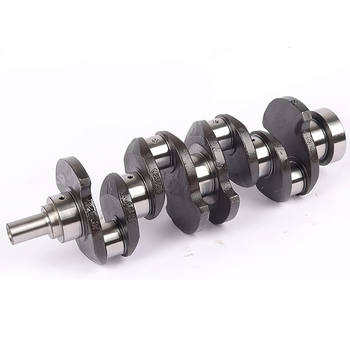
The Hallmarks of Excellence: Quality Control and Innovation
In an industry where failure can lead to catastrophic engine damage, quality control is not just important; it is non-negotiable. A reputable crankshaft manufacturer implements a multi-layered quality assurance system that spans the entire production process.
This includes:
- Material Inspection: Verifying the chemical composition and mechanical properties of raw materials before processing.
- Dimensional Inspection: Using sophisticated measuring equipment like CMMs (Coordinate Measuring Machines), optical comparators, and air gauges to check every critical dimension at various stages.
- Non-Destructive Testing (NDT): Techniques such as magnetic particle inspection (MPI) or ultrasonic testing are used to detect internal flaws or surface cracks that might not be visible to the naked eye.
- Hardness Testing: Ensuring that heat-treated surfaces have achieved the desired hardness levels.
- Dynamic Balancing: Every crankshaft undergoes dynamic balancing on specialized machines to eliminate vibrations and ensure smooth operation at all engine speeds.
- Fatigue Testing: While not done on every single part, sample crankshafts are often subjected to rigorous fatigue testing to validate their design and manufacturing process under simulated real-world conditions.
Beyond stringent quality control, innovation is another defining characteristic of a leading manufacturer. The automotive and industrial sectors are constantly evolving, demanding lighter, stronger, and more efficient components. This drives manufacturers to invest heavily in research and development, exploring new materials, advanced manufacturing techniques like additive manufacturing (for prototypes or specialized applications), and improved surface treatments. Many experts agree that the ability to offer custom crankshaft fabrication for niche applications or high-performance engines is a strong indicator of a manufacturer's engineering prowess and flexibility.
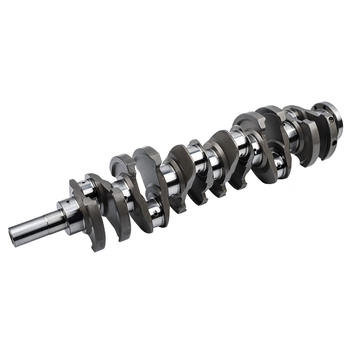
Navigating the Market: Choosing the Right Crankshaft Manufacturer
When it comes to sourcing crankshafts, whether for original equipment manufacturing (OEM), aftermarket replacement, or custom projects, selecting the right partner is paramount. The market is vast, with various automotive crankshaft suppliers and industrial specialists, but not all are created equal.
Here are key factors to consider when evaluating a potential crankshaft manufacturer:
- Experience and Reputation: Look for a manufacturer with a proven track record and extensive experience in your specific industry (e.g., automotive, marine, heavy-duty, power generation). Check their client testimonials and industry certifications (like ISO/TS 16949 for automotive).
- Technical Capabilities: Do they have the necessary machinery for forging, precision machining, heat treatment, and balancing? Can they handle the complexity and tolerances required for your application? Are they capable of handling both high-volume production and low-volume, custom runs?
- Quality Assurance: Inquire about their quality control processes, testing procedures, and adherence to international standards. A manufacturer that welcomes audits and openly shares their quality protocols is a good sign.
- Engineering Support: Can they provide design assistance, material recommendations, and prototyping services? A strong engineering team can be invaluable, especially for new product development or performance optimization.
- Lead Times and Capacity: Do their production capacities align with your volume requirements and delivery schedules? Timeliness is crucial in manufacturing supply chains.
- Customer Service and Communication: A good partner will be responsive, transparent, and proactive in their communication, keeping you informed throughout the production process.
- Cost-Effectiveness: While price is always a factor, it shouldn't be the sole determinant. The lowest price often comes with compromises in quality or service. Focus on value – the balance between cost, quality, and reliability.
Frankly speaking, investing in a high-quality crankshaft from a reputable manufacturer pays dividends in the long run through improved engine performance, reduced downtime, and extended operational life. It’s a decision that impacts the reliability and efficiency of your entire system.
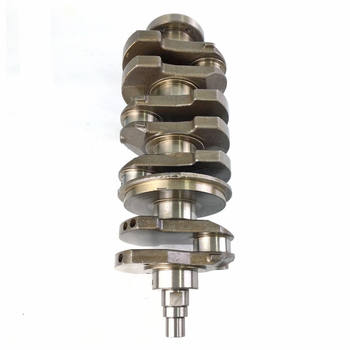
The Future of Crankshaft Manufacturing: Precision, Performance, and Sustainability
The landscape of power generation is constantly evolving. While electric vehicles are gaining traction, internal combustion engines will continue to play a significant role for decades to come, especially in heavy-duty transport, marine applications, industrial machinery, and power generation. This ensures a continued, albeit evolving, demand for the expertise of a crankshaft manufacturer.
The future of crankshaft manufacturing will likely focus on several key areas:
- Advanced Materials: Development of even stronger, lighter alloys that can withstand higher stresses and temperatures, contributing to more efficient and powerful engines.
- Automation and AI: Increased automation in machining and inspection processes, coupled with AI-driven quality control, will lead to even greater precision, consistency, and efficiency.
- Sustainability: Manufacturers will increasingly focus on reducing their environmental footprint through more energy-efficient processes, waste reduction, and the use of recyclable materials.
- Customization and Niche Markets: As engines become more specialized, the ability to produce highly customized crankshafts for specific applications will become even more valuable.
In conclusion, the role of a crankshaft manufacturer is indispensable. They are the silent architects of power, transforming raw materials into the vital components that drive our world. Their commitment to precision, quality, and innovation ensures that engines continue to perform reliably, efficiently, and powerfully. Choosing the right manufacturer is a strategic decision that underpins the success of any engine-dependent operation.
For more detailed information, please visit our official website:crankshaft manufacturer
About the author: Dr. Evelyn Reed is a distinguished mechanical engineer with over 20 years of experience in powertrain design and manufacturing. Specializing in high-performance engine components, she has consulted for leading automotive and industrial firms worldwide. Her expertise spans advanced metallurgy, precision machining, and quality assurance protocols for critical engine parts. Dr. Reed is passionate about the intricate processes that transform raw materials into the reliable components driving modern machinery.
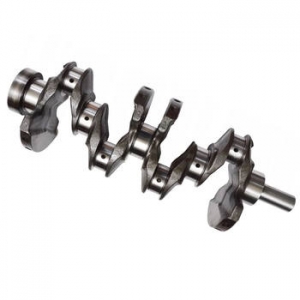 The Ultimate Guide to Getting
The Ultimate Guide to Getting
 The Unsung Heroes: Unveiling t
The Unsung Heroes: Unveiling t
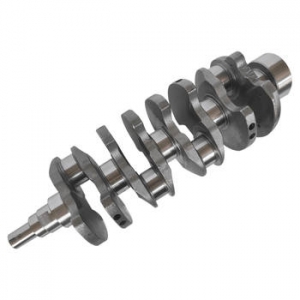 Unlocking Power: A Deep Dive i
Unlocking Power: A Deep Dive i
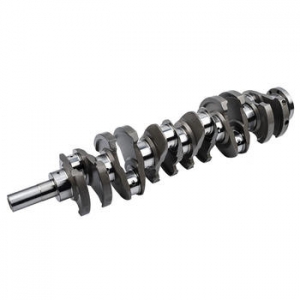 The Ultimate Industrial Cranks
The Ultimate Industrial Cranks
